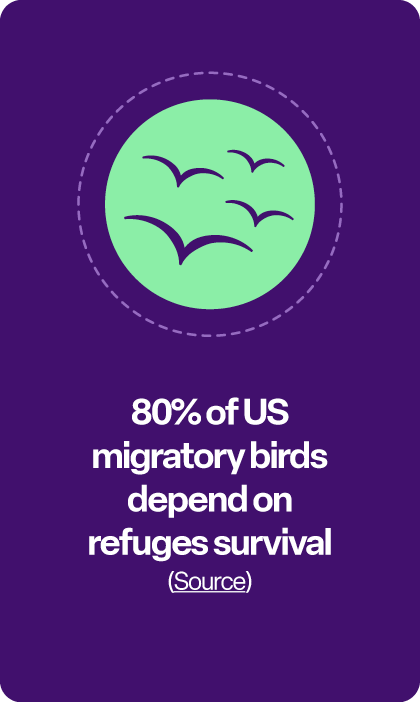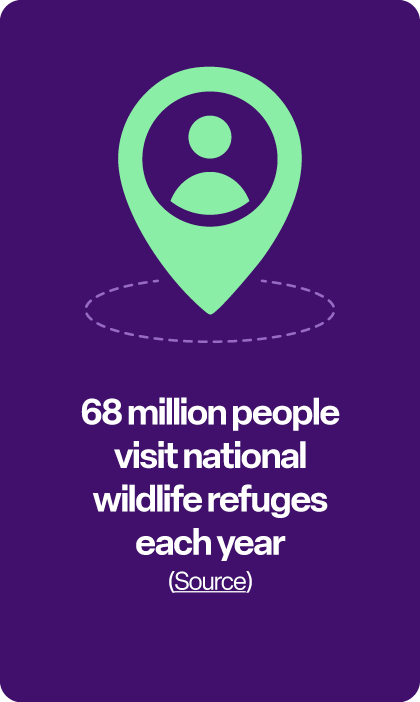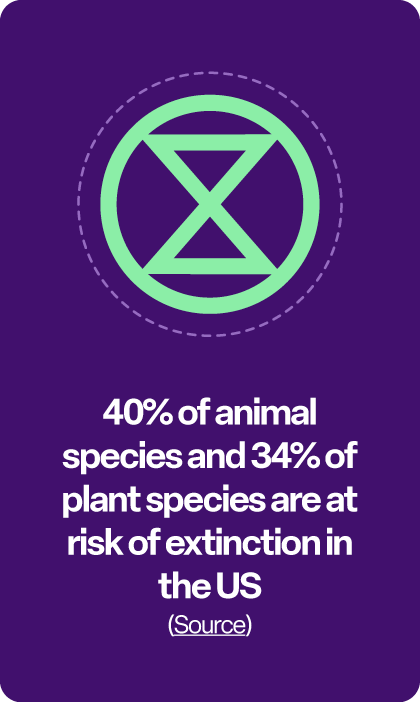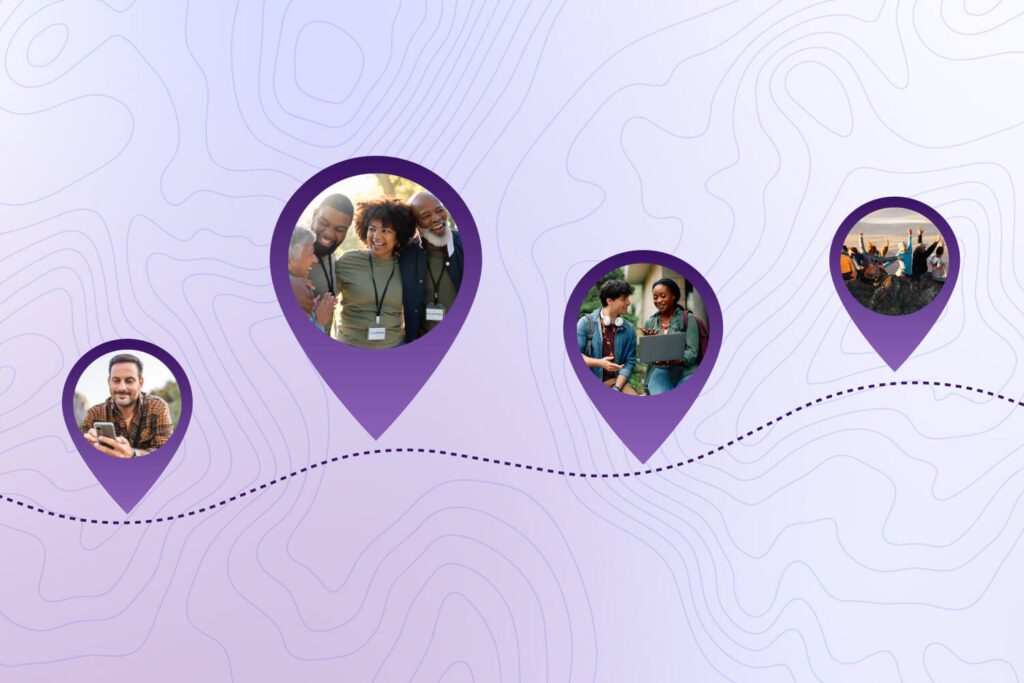Protecting America’s wildlife refuges
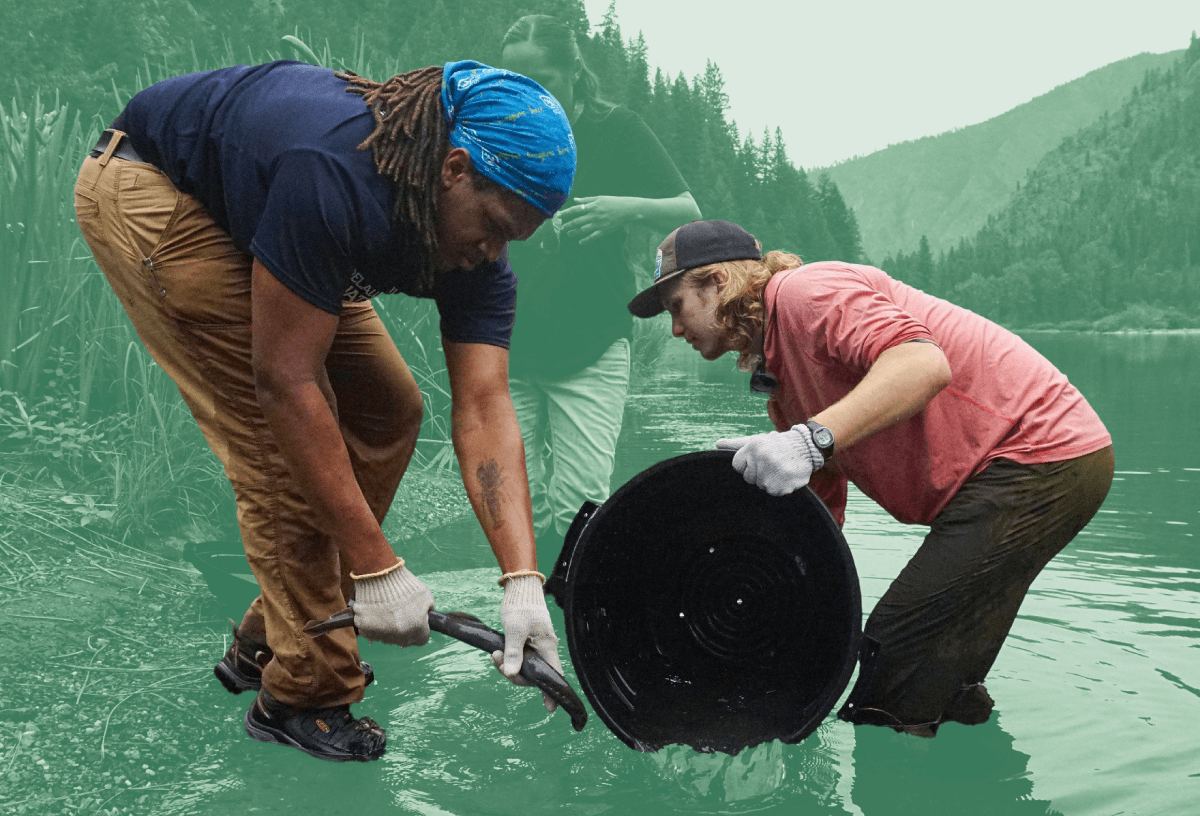
Overview
50 years of wildlife protection at a crossroads
“For decades, we’ve been fighting to protect the nation’s wildlife refuges,” says Eden Taylor, director of communications and marketing at the National Wildlife Refuge Association (NWRA). “These refuges provide essential habitats for threatened and endangered species, but they also support biodiversity while providing communities with natural flood and storm protection, clean water, and unparalleled places for Americans to recreate.”
Founded in 1975, the NWRA has been the voice of the National Wildlife Refuge System, the world’s largest network of lands and waters set aside for wildlife conservation. NWRA works tirelessly to ensure these critical ecosystems are safeguarded for future generations. But with recent cuts to federal funding and federal staff leaving since the beginning of the year, NWRA must be creative with attaining resources to help the System maintain operations and protect wildlife. With a small staff and a big mission, NWRA utilizes Bonterra EveryAction to mobilize a network of partners and stakeholders. Without those dedicated supporters, the integrity of over 570 national wildlife refuges across the U.S. are at risk.
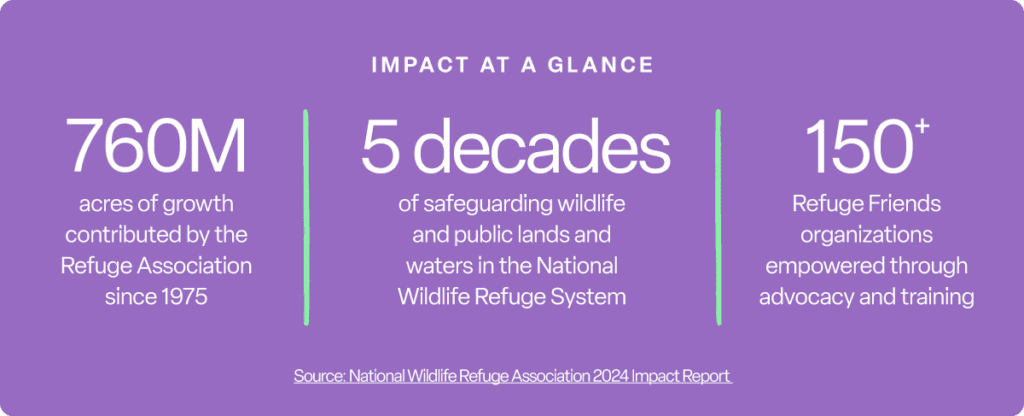
Challenges
Defending fragile ecosystems amid escalating threats
National wildlife refuges are under constant threat from environmental destruction and climate change. Refuge lands are also increasingly subject to pressures from oil and gas exploration, harmful commercial developments, and even construction of the border wall, which segments sensitive habitat. These threats damage fragile ecosystems that are essential for the survival of numerous species.
“The biggest challenge we face is protecting our refuges from these ongoing threats,” says Eden. “While we’re making progress, we are fighting against a backdrop of diminished federal funding and increasing environmental damage.”
Lack of funding
Internally, NWRA has similar fiscal challenges that many small nonprofits face — the ongoing challenge of securing sufficient funding to manage their operations and advocacy efforts. Their work depends on large-scale coordination and mobilization, often requiring significant resources. The growing number of threats to wildlife refuges means that NWRA must navigate complex and often contentious political landscapes. Federal grants used to significantly fund the organization but in recent years, they have moved towards individual and major donors, foundations, and partner closely with like-minded organizations such as the Coalition of Refuge Friends and Advocates and Refuge Friends organizations nationwide.
Balancing advocacy for wildlife with community and governmental needs requires a comprehensive and strategic approach, which can be difficult to manage without the right tools.
Solution
Public outreach and partnership building
To address these challenges, NWRA has focused on educating policy decision makers and the public while building strong partnerships across the conservation community. The organization works directly with local communities, government agencies, and other stakeholders to prevent harmful activities and ensure that refuges are protected. Through legislation, NWRA is pushing for more robust protections for refuges, including measures to combat climate change and prevent further encroachment from industrial activities.
“The only way to tackle these challenges is by demonstrating that national wildlife refuges matter to people and local economies,” says Eden. “I think a lot of people don’t realize how much these public lands bring into the local economy, how many jobs they create, how many small businesses they support, and how much tourism it encourages. They are quite simply, nature next door, and they support local communities.”
Every dollar appropriated to the Refuge System returns an average of $5 annually to local economies, along with over 41,000 jobs and $3.2 billion in economic output.
How Bonterra helps NWRA focus on advocacy
Bonterra has played a key role in helping NWRA streamline its operations and fundraising efforts. Through Bonterra’s donor engagement platform, EveryAction, NWRA has improved the efficiency of its fundraising, enabling them to engage more supporters and grow their donor base. With easy-to-use tools that allow for seamless donor communication and data tracking, Bonterra helps NWRA focus its efforts on advocacy and outreach. The switch was motivated by the need for a better user experience and interface, as well as more advanced fundraising dashboards and reports.
“We’ve seen significant improvements in how we manage our relationships with donors, how we communicate with our supporters, and how we keep track of our donations,” says Eden. “Bonterra’s system has been a game-changer for us, especially in scaling up our efforts and enabling us to focus on our mission.”
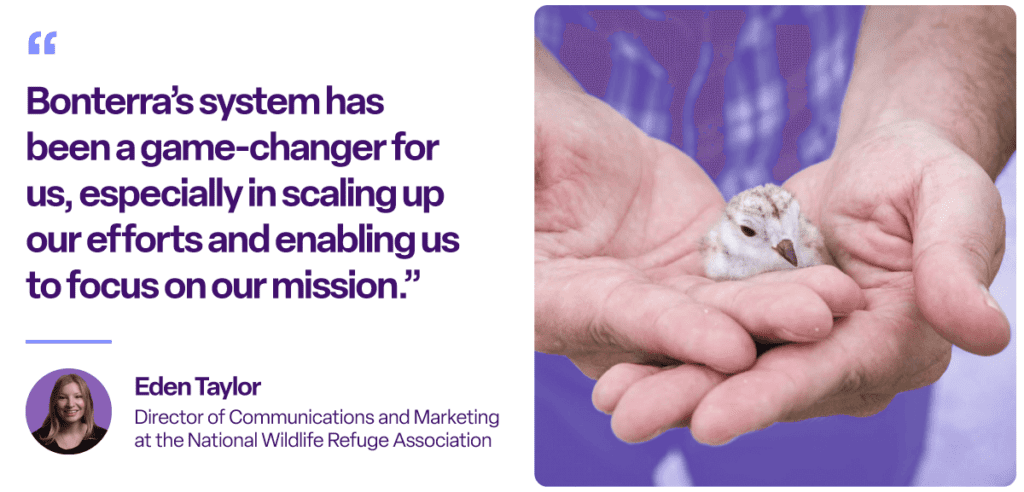
Impact
Protecting the future of America’s wildlife
Thanks to the tireless efforts of NWRA, along with the support from Bonterra’s technology, the National Wildlife Refuge System has grown into the world’s largest, and most important system of lands and waters for wildlife conservation. Over the last 50 years, NWRA has been instrumental in the creation and expansion of protected wildlife areas, pushing for the conservation of critical ecosystems for both wildlife and people.
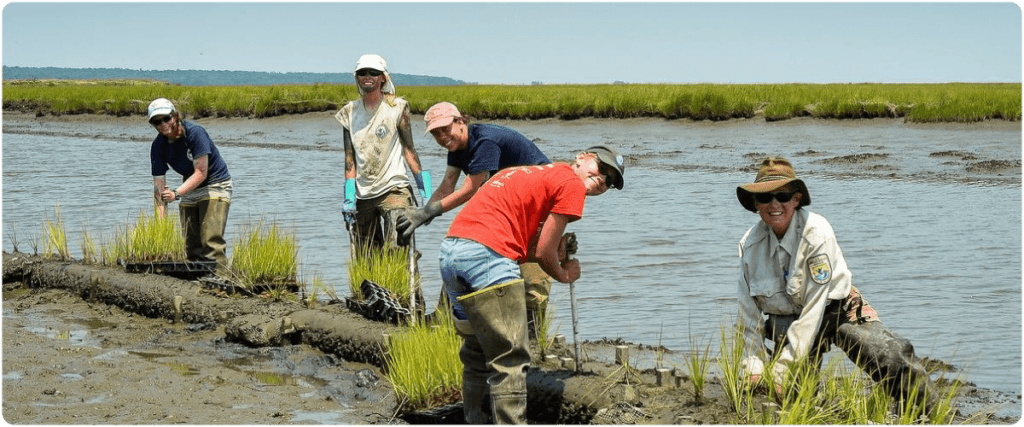
“Our work is having a direct, positive impact on the ground,” says Eden. “From fighting for more funding to supporting local communities, we’re seeing real progress. We know we have a long road ahead, and today’s political landscape is challenging, but with continued support, we can ensure America’s wildlife heritage flourishes for future generations of Americans.”
Looking ahead, NWRA plans to expand its advocacy efforts, focusing on securing more permanent protections for wildlife refuges and increasing the visibility of the Refuge System within the public eye and policy discussions.
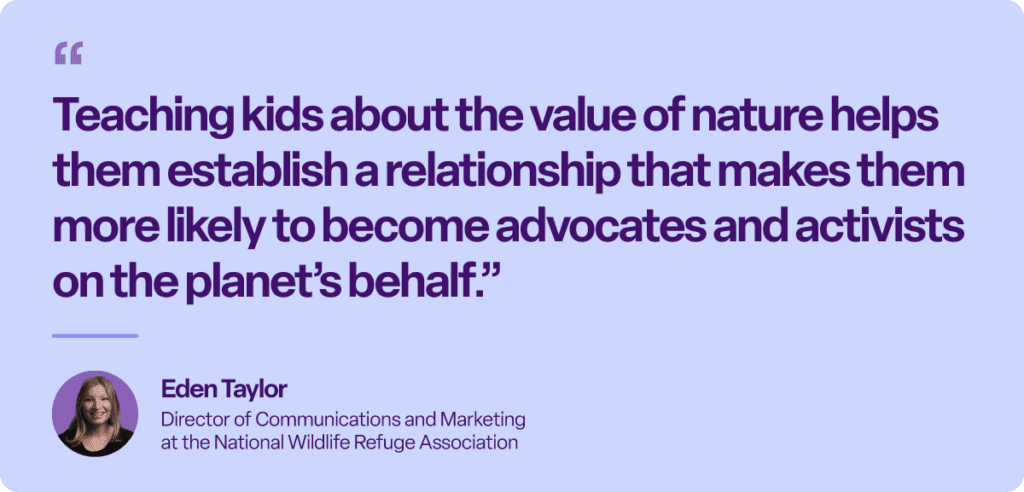
“We’re trying to educate the public about how beneficial these national wildlife refuges are for them and their communities, so that we can show these places are special and people don’t want them to go away,” says Eden.
“The work we do now will make a difference for generations to come. It’s an exciting time for conservation, and we’re more determined than ever to fight for the future of our wildlife and our natural lands.”

Work with Bonterra
